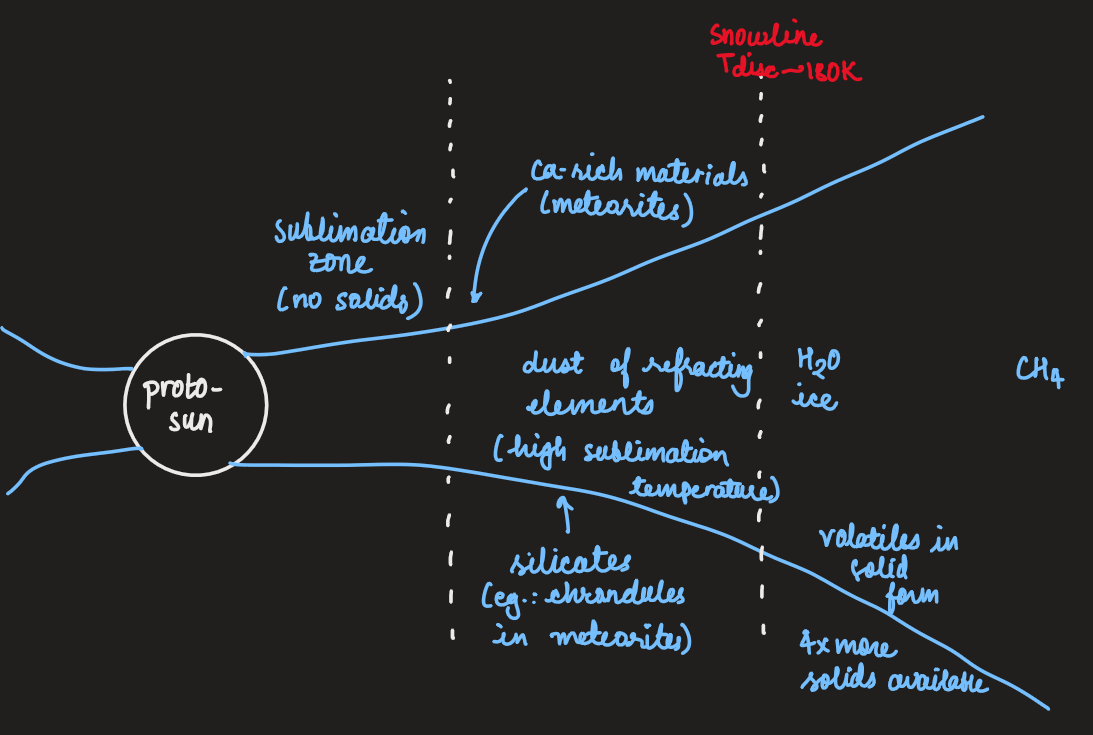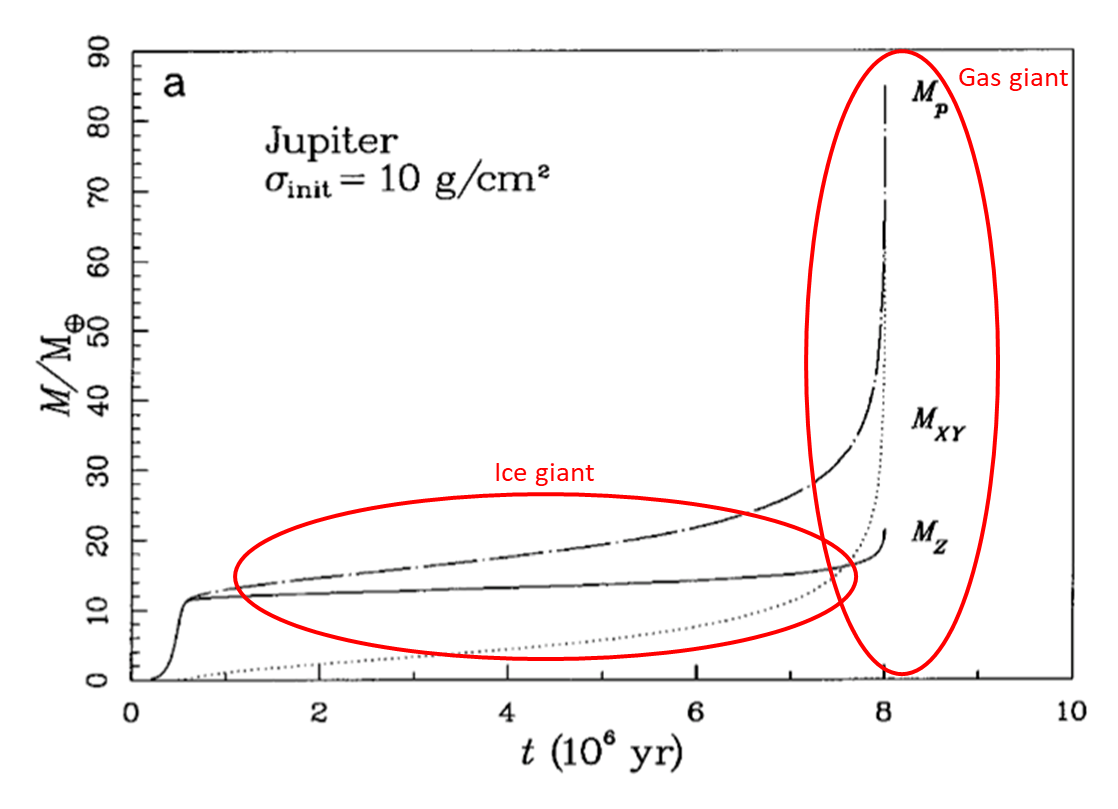PX282 - L2 - core accretion
-
firstly, the young sun and the protoplanetary disc is formed by gravitational collapse
-
sub-micron sized dust particles are formed by condensation


image: NASA, CalTech, JPL, Leiden Observatory
- growth of particles by pair-wise collisions*, up to
km planetesimals - initially assisted by electrostatic forces, icy particles stick together readily, so they grow more rapidly beyond the snowline
- there are two problems:
- particles become fragile as they grow and can be eroded by higher velocity collisions
- gas drag on particles in the disc, causing the larger particles to spiral in towards the sun
- considering orbit with the gas disc:
- the additional term is for support against gravity for gas only, assuming a negative pressure gradient in disc
solid particles feel a headwind; at AU, ms - there will be significant drag on the solids that leads to settling of solid particles into disc mid-plane and gradual spiral in towards the proto-sun
- the drag force:
where,
- the characteristic timescale to modify the orbit:
-
at 1 AU:
ms ms -
for a planet,
yr life time of a gas disc -
for a dust particle,
seconds, so it is carried by gas -
for a 1 m object,
years, so they will spiral into the sun and will be lost from the disc -
there is a significant pattern for core-accretion scenario
-
possible solutions:
- structures in disc can trap particles in high pressure regions promoting rapid growth
- streaming instabilities can cause clumps of particles, shielding each other from the disc headwind
-
the planetesimals further grow into proto-planets
assisted by mutual gravity -
this stops at isolation mass, when the hill sphere of the planet has swept out an annuls of the disc
-
more massive cores form beyond the snowline, where ices can form
-
the surface density of disc:
where,
- spacing of the planets
increases - for jupiter:
-
taking
at 1 AU to be , and the factor of accounts for ice as well as rock -
massive cores form rapidly beyond the snowline, capable of accreting gas
-
massive cores accrete gas from disc
-
gas fills the hill sphere of the planet, but it must radiate its gravitational potential energy to cool and settle on the planet
-
initially, this is slow as diffuse gas cools inefficiently (cooling rate
) -
the gas accretion rate increases as gas mass increases, and the gas gets compressed, so it radiates more efficiently
-
eventually, it becomes a runaway process that rapidly accretes all the gas in disc annulus
-
this is how a gas giant is formed
-
the timescale is similar to disc lifetime
-
if the disc is dispersed during slow gas accretion phase, an ice giant is formed

image: Pollack, et al (1996); legend:
- initially, rocky/icy core assembles rapidly
- then, there is slow accretion of gas, limited by cooling
- eventually, there is runaway gas accretion to a gas giant
- the gas accretion is halted by photoevaporation of the disc by the young sun
- recalling, for planet atmospheres:
where,
- considering the escape velocity from the sun:
where,
- equating the two velocities:
-
beyond this
, photoevaporation of the outer disc can be seen, shutting off the supply of gas to the inner disc -
terrestrials assembled via giant collisions between protoplanets, after disc dispersal
-
the gravitational perturbation of orbits cause the eccentricity to be increased, causing crossing orbits and collisions
-
previously, orbits were circularised by interaction with the gas disc
-
evidence for giant collisions:
- presence and composition of earth's moon (same as earth's mantle)
- high density of mercury (missing mantle material, lost in collision)
- spin obliquity of uranus
-
from the radioisotope dating of moon rocks and meteorites, the moon can be dated back to
Gyr -
the solar system is
Gyr old, and the assembly of the terrestrials took years